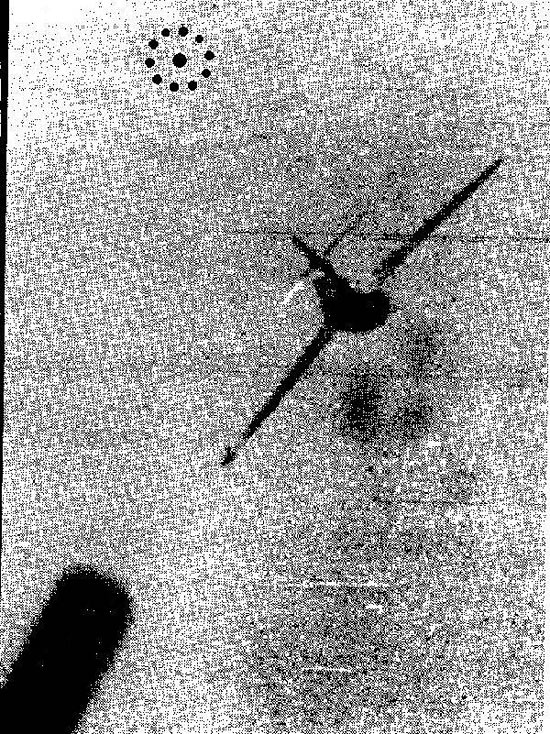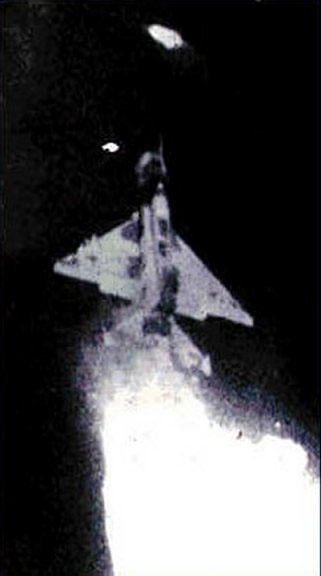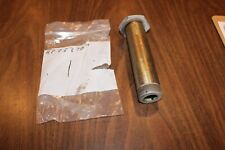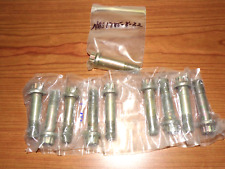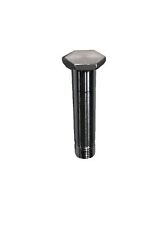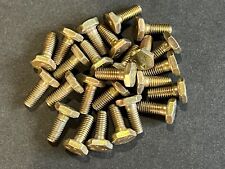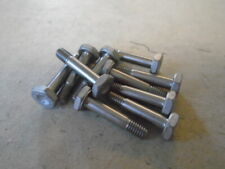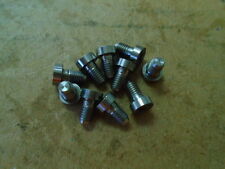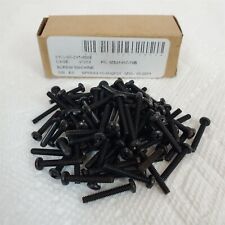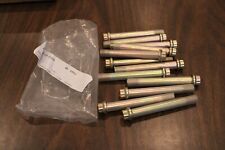Disturbed Reticle Snap Shot
The disturbed reticle LCOSS can be used for a snap shot attack, but the technique is a bit more complicated than what it was for the fixed sight. In the discussion of the fixed sight, we advocated a one G technique for the snap shot. You can do the same for the disturbed reticle sight, but if you do, then you are essentially using the LCOSS as a fixed sight. There is nothing wrong with this, and, in fact, this remains a very good technique, but the LCOSS also offers you the chance to snap shoot with G on your aircraft.
The basis for this technique rests again on the idea that the reticle position is an indicator of bullet position fired one TOF ago. If we can maneuver such that the target will fly into the pipper one TOF after we pulled the trigger, then we have a good chance of getting a hit.
As always with a disturbed reticle sight system, the controlling factor is maintaining a constant G and steady firing platform as you position the pipper. I am using the term ‘pipper’ in this paragraph because the funnel display is more difficult to snap shoot with. The funnel can be used, but, because of the difficulty in estimating range, the actual display is harder to interpret in an out-of-plane shooting position.
Determining Target Range
The LCOSS will have either a fixed range or radar range input. Because of the highly dynamic nature of the snap shot geometry, ranging errors are to be expected. You can reduce their significance by reducing the firing range.
The next figure shows a specialized snap shooting sight from Falcon 4. The tracer line is your bullet path. The position of the reticle is determined by radar ranging, or in the absence of a lock on, the reticle is fixed at a range of 1500 feet. The tick marks are TOF markers for .5, 1.0, and 1.5 seconds.
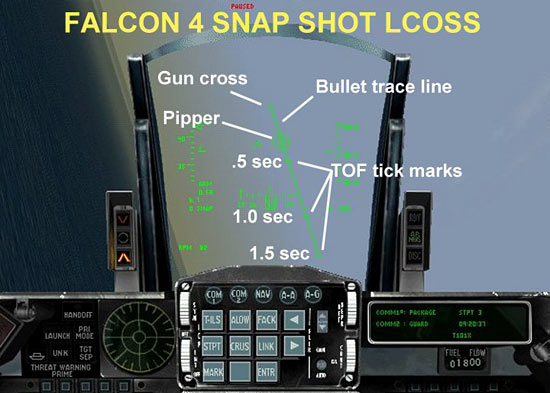
Determining Target Plane Of Motion
In the fixed sight discussion of the snap shot, we used a one G technique that used cockpit and HUD references to align the target’s flight path with our gun line. But the advantage of a disturbed reticle system is that it attempts to show bullet position at any G. Can the disturbed reticle sight be used for a snap shot when you are pulling more than one G?
The answer is yes. But, the level of difficulty goes up quite a bit. Instead of flying the target through the gun line position, you are now going to have to fly the target through the displaced pipper position. The trick is how to get the target to fly through the pipper. Remember, you and the target are flying two different flight paths! The LCOSS snap shot when you are pulling G is an out-of-plane maneuver! Here’s how to do it.
Begin with a substantial amount of lead. Get your nose out in front of the target…outside the edge of the forward canopy bow in most cases. The picture that you want to visualize is that you are going to drag your pipper across the target’s flight path. Your objective is to have the pipper cross that flight path the same time as the target.
Determining Sight Settling Time
With your nose in lead, try to stabilize your G load as you position the pipper in the projected target flight path. The steadier you are with your G control, the less settling time you will require. Remember that the sight responds to your G inputs, so any last second pitch movement may result in an invalid pipper position.
Determining The Open Fire Point
This is not called a snap shot for nothing! The open fire point comes and goes in a heartbeat! Think of yourself as a one-handed juggler…you have two balls up in the air…the pipper and the target. You are going to try and catch them both at the same time. Can it be done? Yes, but not easily!! The next figure shows the situation.
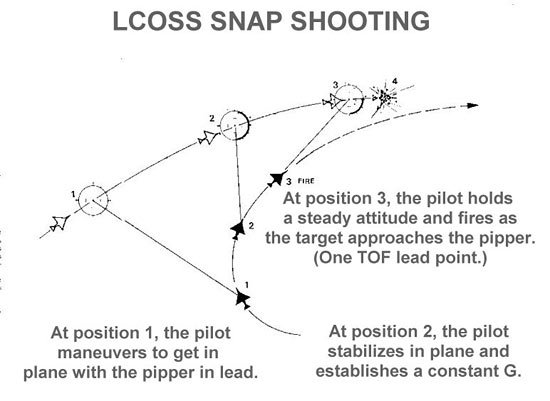
Your objective is to fire as the target flies into the pipper. Increase your chances by raking your bullet stream across the target flight path. Don’t try to fire the magic single bullet…instead account for lead errors and out-of-plane errors by firing as you pull your pipper through the target flight path.
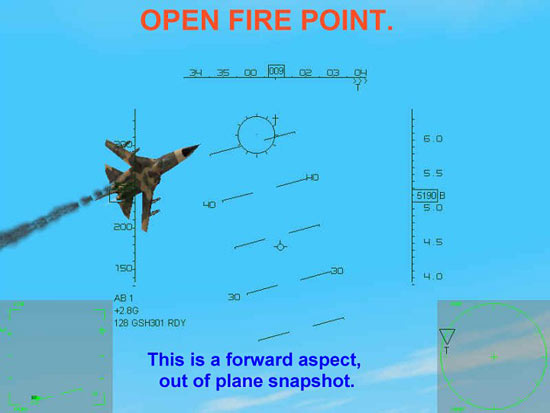
OK!! It’s now time to move on to the Director LCOSS. In many respects, the director sight is similar in employment to the disturbed reticle sight.


